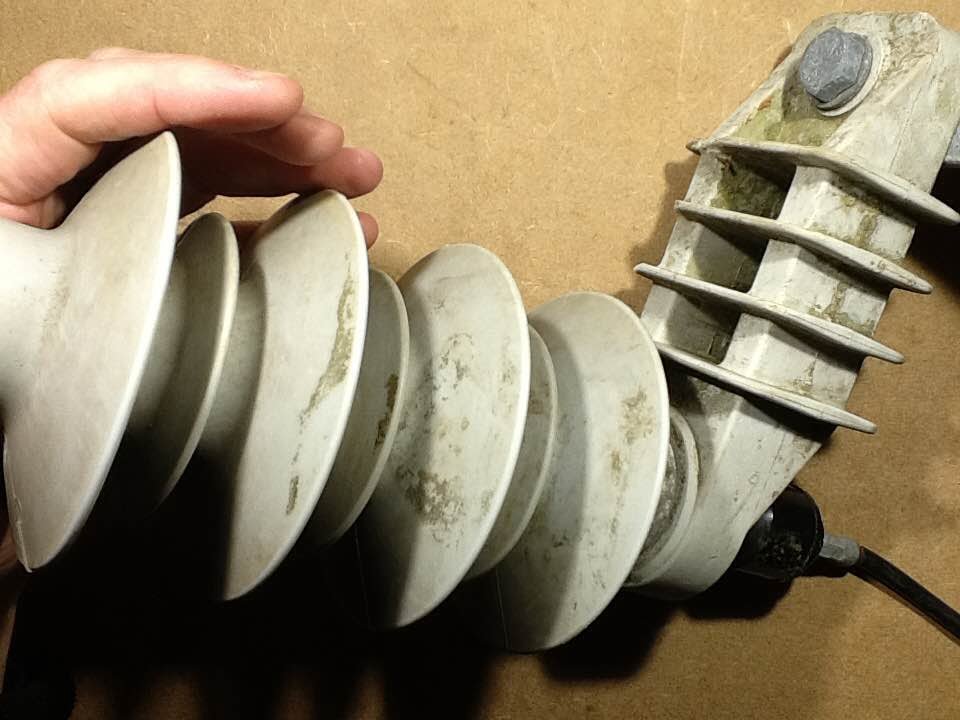11kV lightning arrestor and exploding disconnecter.
This is a lightning arrester from an 11kV power distribution line with an interesting feature to clear itself electrically when sustained current flows through it.
Inside a robust fibreglass insulated core is a stack of MOV’s (Metal Oxide Varistors) which have a combined voltage to handle the regular peak voltage of the 11kV supply (presumably 15.5kV peak) plus a safety margin. However, when a higher voltage transient occurs on the line the MOV voltage is exceeded and they temporarily develop a lower resistance which shunts the transient to ground to protect other components on the line.
If an excessive over-voltage occurs or the MOVs start to break down after passing a modest amount of transients then there is a disconnecter attached to the bottom of the unit that will literally detonate and blow the ground cable off the end of the unit for safety. The primary function of this is to prevent the lightning arrester from passing significant current from the normal 11kV supply when it fails.
To achieve the fault detection and clearing, the disconnecter has a resistor in it that has enough mass to pass transients without heating up excessively, but when sustained current through it causes it to heat up it ignites an explosive charge that physically blows the assembly apart and lets the ground cable fall down away from the arrester, thus breaking the circuit.
At this point the arrester should be investigated, as the base is not designed to have a sustained open circuit 11kV leakage across it via the MOVs.
One of the most intriguing things about the insulator is that the water shedding disks are made of a silicone rubber material that makes the unit quite rubbery and floppy feeling, but makes it resistant to impact, thermal and UV damage.
In the video I deliberately trigger the explosive charge by applying 240V across a disconnecter. The internal resistance of around 75 ohms allowed about 3A to pass giving an internal dissipation of about 750W. This caused the unit to detonate after a few seconds. I did the experiment with the disconnecter under water to absorb the impact, contain the bits and avoid making a huge explosion in the neighbourhood.

